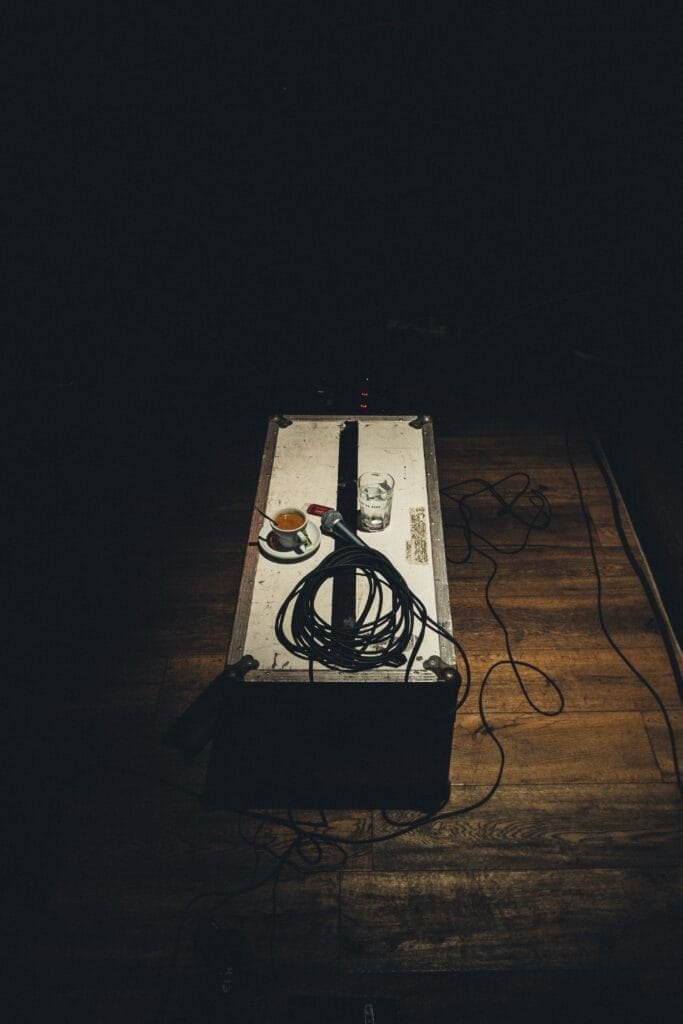If you’re a beginner looking to take your first steps into the world of skateboarding, finding the right skateboard can be a daunting task. With so many options available, it’s easy to get overwhelmed and end up with a board that’s not suitable for your needs. But fear not! In this article, we’ll guide you through the process of selecting the best skateboard for beginners, considering factors such as deck size, wheel type, and trucks. By the end of this article, you’ll have all the information you need to make an informed decision and get rolling on the perfect skateboard for your skill level.
1. Skateboard Types
1.1. Street Skateboards
Street skateboards are the most common and versatile type of skateboard. They are designed for tricks and maneuvers on various surfaces, such as sidewalks, ramps, and skate parks. Street skateboards typically have a shorter deck length, which allows for better control and maneuverability. They also have smaller and harder wheels, enabling them to perform tricks like ollies, kickflips, and grinds. Street skateboards are ideal for beginners who are interested in learning tricks and mastering their skills in skate parks or urban environments.
1.2. Cruisers
Cruisers, as the name suggests, are designed for smooth and relaxed rides. They are perfect for beginners who want to use skateboarding as a convenient mode of transportation. Cruisers typically have a wider deck and larger, softer wheels, providing stability and a more comfortable ride on rough surfaces. These skateboards are great for commuting short distances, cruising around the neighborhood, or simply enjoying a leisurely ride along the beach or park.
1.3. Longboards
Longboards are specifically designed for downhill riding, cruising, and long-distance transportation. They have a longer and wider deck, giving riders more space and stability. Longboards also have larger, softer wheels that provide a smooth and comfortable ride on various terrains, including rough pavement and hills. They are perfect for beginners who want to experience the thrill of speed and enjoy the freedom of long-distance riding.
1.4. Mini Skateboards
Mini skateboards, also known as mini cruisers or penny boards, are compact and lightweight skateboards with a smaller deck size. They are highly portable and suitable for riders who prioritize convenience and easy storage. Mini skateboards are great for beginners who want a simple and fun way to cruise around their neighborhood or college campus. Although they are not designed for tricks or high-speed riding, mini skateboards offer a smooth and enjoyable riding experience.
2. Skateboard Deck
2.1. Deck Width
The width of the skateboard deck plays a crucial role in determining stability and control. Wider decks provide more stability, making them suitable for beginners who are still developing their balance and coordination skills. On the other hand, narrower decks offer better maneuverability, allowing riders to perform tricks and quick turns with ease. For beginners, it is generally recommended to choose a deck width between 7.5 to 8.5 inches, as this range provides a good balance of stability and maneuverability.
2.2. Deck Length
The length of the skateboard deck affects its overall stability and the range of tricks it can accommodate. Longer decks offer more stability and a smoother ride, which is beneficial for beginners who are still getting comfortable with skateboarding. Shorter decks, on the other hand, are more maneuverable and suitable for tricks and technical maneuvers. Beginner skateboarders may find decks between 28 to 32 inches in length to be the most comfortable and versatile for learning and practicing various skills.
2.3. Deck Shape
Skateboard decks come in different shapes, and each shape has its own advantages and purposes. The most common deck shapes include the traditional popsicle shape, which is symmetrical and ideal for street skateboarding and tricks. Another popular shape is the cruiser shape, which has a wider and more curved nose and tail, providing a more comfortable ride for cruising and transportation. When choosing a deck shape, beginners should consider their preferred skateboarding style and the type of tricks or rides they plan to pursue.
2.4. Deck Material
Skateboard decks are usually made from various materials, including maple, bamboo, and composite materials. Maple is the most common and widely used material due to its durability and strength. Bamboo decks, on the other hand, offer more flexibility and a lighter weight, resulting in a smoother and more responsive ride. Composite decks combine different materials, such as fiberglass and carbon fiber, to provide a blend of strength, flexibility, and lightness. For beginners, maple decks are recommended as they provide a good balance of durability and affordability.

3. Skateboard Trucks
3.1. Truck Width
The width of the skateboard trucks should match the width of the deck to ensure stability and proper handling. Trucks that are too narrow or too wide may affect the performance and maneuverability of the skateboard. As a general guideline, the width of the trucks should be within 0.25 inches of the deck width. For example, if you have an 8-inch deck, the trucks should be around 7.75 to 8.25 inches wide. Matching the truck width to the deck width will ensure optimal control and stability while riding.
3.2. Truck Materials
Skateboard trucks are typically made from aluminum, which provides a combination of strength and lightweight. Aluminum trucks are durable and can endure the impact and stresses of skateboarding. Some trucks may also have additional features, such as hollow axles or titanium components, which further reduce weight without compromising strength. Beginners should look for trucks made of high-quality aluminum as they offer a good balance of performance and affordability.
3.3. Truck Height
Truck height refers to the distance between the baseplate and the axle. High trucks provide more clearance for larger wheels, allowing for a smoother ride on rough surfaces and preventing wheel bite, which is when the wheels rub against the deck while turning. Low trucks, on the other hand, offer better stability and control, making them suitable for technical tricks and maneuvers. For beginners, it is generally recommended to choose trucks with a medium height, as they provide a balance between stability and maneuverability.
4. Skateboard Wheels
4.1. Wheel Diameter
The diameter of the skateboard wheels determines the overall ride quality and performance. Larger wheels provide a smoother ride and can roll over cracks and rough terrain with ease. They are also well-suited for higher speeds. Smaller wheels, on the other hand, offer better maneuverability and are ideal for technical tricks. For beginners, a wheel diameter between 50 to 55mm is recommended as it offers a good balance between stability, maneuverability, and versatility.
4.2. Wheel Durometer
Wheel durometer refers to the hardness of the skateboard wheels. Durometer is measured on a scale known as the “A” scale, with higher numbers indicating harder wheels. Softer wheels, with a lower durometer rating, provide better grip and a smoother ride on rough surfaces. Harder wheels, with a higher durometer rating, are more suitable for smooth surfaces such as skate parks and ramps, as they offer greater speed and slide ability. For beginners, wheels with a durometer rating between 78A and 87A are recommended for a balance between grip and versatility.
4.3. Wheel Shape
Skateboard wheels come in various shapes, including square-edged, round-edged, and conical. Square-edged wheels offer more surface area contact with the ground, providing better grip and stability. Round-edged wheels, on the other hand, offer easier slide ability and smoother transitions during tricks and slides. Conical wheels combine both square and round edges, offering a balance between grip and slide ability. For beginners, round-edged wheels are generally recommended for their versatility and ease of use.
4.4. Wheel Contact Patch
The contact patch of the skateboard wheels refers to the area of the wheel that makes contact with the ground. A larger contact patch provides more grip and stability, making it ideal for cruising and downhill riding. A smaller contact patch offers less grip, enabling riders to perform tricks and slides with greater ease. Beginners should consider wheels with a medium to large contact patch, as they provide a good balance between grip and maneuverability.

5. Skateboard Bearings
5.1. ABEC Ratings
ABEC ratings are used to measure the precision and smoothness of skateboard bearings. However, the ABEC rating system is not the most accurate measure of performance for skateboard bearings. Higher ABEC ratings do not necessarily indicate better performance for skateboarding. For beginners, it is recommended to choose bearings with an ABEC rating of 5 or higher, as they provide a good balance of performance and affordability.
5.2. Bearing Materials
Skateboard bearings can be made from various materials, with steel and ceramic being the most common. Steel bearings are durable, affordable, and suitable for most beginner skateboarders. Ceramic bearings, on the other hand, offer better performance due to their superior smoothness and resistance to corrosion. However, ceramic bearings are more expensive and may not be necessary for beginners who are just starting out.
5.3. Bearing Maintenance
Proper maintenance is essential to ensure the longevity and performance of skateboard bearings. Regular cleaning and lubrication can help keep the bearings running smoothly and prevent corrosion and damage. Beginner skateboarders should familiarize themselves with the proper cleaning and lubrication techniques to maintain their bearings in optimal condition. It is also recommended to replace bearings if they become worn or damaged to ensure a safe and enjoyable riding experience.
6. Skateboard Grip Tape
6.1. Grip Tape Coarseness
Grip tape is the rough surface applied to the top of the skateboard deck, providing traction and grip for the rider’s feet. There are different levels of coarseness available, ranging from fine to coarse. Coarser grip tape offers more grip, making it ideal for tricks and maneuvers that require a firm footing. Finer grip tape provides a more comfortable ride and is suitable for cruising and transportation. Beginner skateboarders may prefer a medium-coarse grip tape, as it offers a good balance of grip and comfort.
6.2. Grip Tape Adhesive
Grip tape adhesive is what keeps the grip tape securely attached to the skateboard deck. It is important to choose grip tape with strong adhesive to ensure it stays in place during rides and tricks. High-quality grip tape adhesive provides a durable bond that withstands the impact and stresses of skateboarding. Beginners should look for grip tape with strong adhesive to ensure a safe and stable riding experience.
6.3. Grip Tape Design
Grip tape comes in various designs and patterns, allowing riders to personalize their skateboard according to their preferences. This can range from simple solid colors to intricate artwork and logos. The design of the grip tape does not affect its performance, but it can add a unique touch to the skateboard and reflect the rider’s personality. Beginners can choose grip tape designs that resonate with their individual style and preferences.

7. Skill Level Considerations
7.1. Beginner-Friendly Features
When choosing a skateboard, beginners should look for features that make the board beginner-friendly. This may include a wider and more stable deck, softer wheels for a smoother ride, and trucks with medium height for better control. Beginner-friendly features can enhance the learning experience and help beginners develop their skills with more ease and confidence.
7.2. Ease of Control
For beginners, it is important to choose a skateboard that is easy to control. This includes considering factors such as deck width, truck width, and wheel hardness. A skateboard with the right combination of these factors will offer better stability and maneuverability, making it easier for beginners to learn and practice various tricks and riding styles.
7.3. Stability
Stability is crucial for beginners who are still developing their balance and coordination skills. A skateboard with a wider deck, larger and softer wheels, and medium-height trucks will provide better stability, allowing beginners to gain confidence and improve their skills. It is important for beginners to feel stable and secure on their skateboard to ensure a safe and enjoyable riding experience.
8. Price Range
8.1. Budget
Skateboards are available in a wide range of prices, and beginners can find suitable options within a budget range. Budget-friendly skateboards often offer good value for money, featuring decent quality components that are suitable for beginners. It is important to note that while budget skateboards may not have the same level of performance or longevity as higher-end models, they are still a great option for beginners who want to try skateboarding without breaking the bank.
8.2. Mid-range
Mid-range skateboards offer a balance of quality and affordability, making them a popular choice for beginners who are willing to invest a bit more in their skateboard. These skateboards often feature more durable and higher-performing components, providing better performance and longevity compared to budget options. Mid-range skateboards are a great choice for beginners who are committed to learning and progressing in skateboarding.
8.3. High-end
High-end skateboards are designed for advanced riders and professionals who demand the highest level of performance and quality. These skateboards often feature premium components, such as high-quality decks, precision bearings, and advanced truck systems. While high-end skateboards may not be necessary for beginners, they can be an aspirational goal for those who are passionate about skateboarding and looking to take their skills to the next level.
9. Safety Gear
9.1. Helmet
Safety should always be a top priority when skateboarding, especially for beginners. A helmet is essential to protect the head from potential injuries and should be worn at all times while skateboarding. It is important to choose a helmet that fits properly and meets safety standards. Look for helmets that are specifically designed for skateboarding, as they offer better protection for impacts and falls.
9.2. Knee and Elbow Pads
Knee and elbow pads provide additional protection for the joints and help prevent injuries during falls and impacts. They should be worn by beginners, especially when learning new tricks or riding in unfamiliar environments. Knee and elbow pads should fit securely and comfortably to ensure proper protection and range of motion while skateboarding.
9.3. Wrist Guards
Wrist guards are recommended to protect the wrists from injuries, such as fractures and sprains, which are common in skateboarding. They provide support and stability to the wrists during falls and impacts. Wrist guards should be snug but not too tight, allowing for proper movement and flexibility while ensuring protection. Beginners should consider wearing wrist guards to minimize the risk of wrist injuries.
10. Recommendations
10.1. Beginner Skateboards for Street Skating
For beginners interested in street skateboarding and learning tricks, a suitable skateboard would be a street skateboard with a deck width between 7.75 to 8.25 inches for stability and control. The skateboard should have medium-height trucks for maneuverability and wheels with a diameter between 50 to 55mm for a balance of stability and versatility. Beginner-friendly features, such as a wider deck and softer wheels, can further enhance the learning experience.
10.2. Beginner Cruisers for Transportation
For beginners who prioritize transportation and cruising, a cruiser skateboard with a wider deck and larger, softer wheels would be ideal. Cruisers with deck lengths between 28 to 32 inches provide stability and comfort for beginners. The wheels should have a diameter between 55 to 60mm for a smooth ride over rough surfaces. A medium-coarse grip tape will provide adequate traction for comfortable and secure rides.
10.3. Beginner Longboards for Downhill Riding
For beginners interested in downhill riding and long-distance transportation, a longboard with a longer and wider deck is recommended. Longboards provide stability and a smooth ride, making them ideal for beginners who want to experience speed and long-distance riding. Wheels with a larger diameter and a softer durometer rating offer better shock absorption and grip. Safety gear, including a helmet, knee and elbow pads, and wrist guards, should be worn to ensure a safe and enjoyable riding experience.
